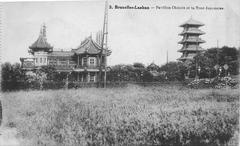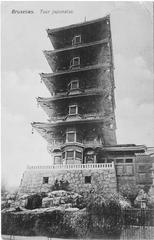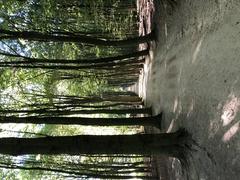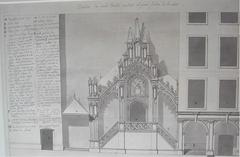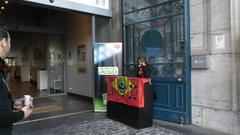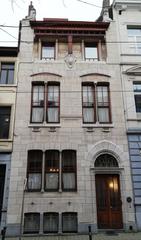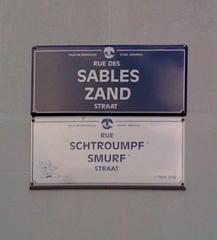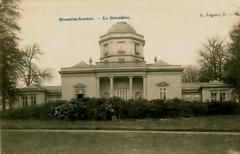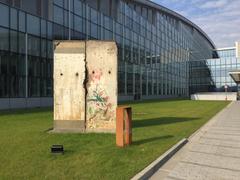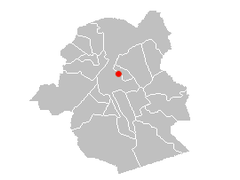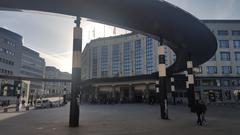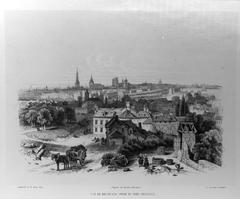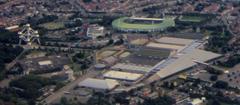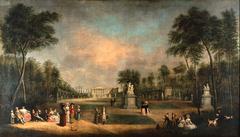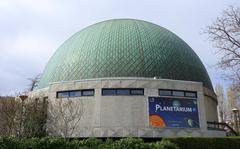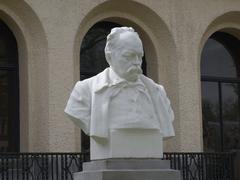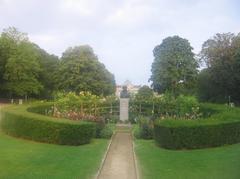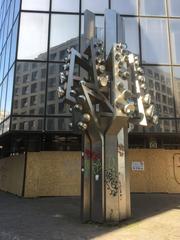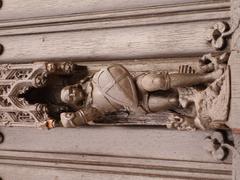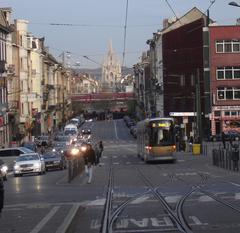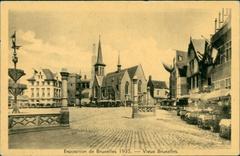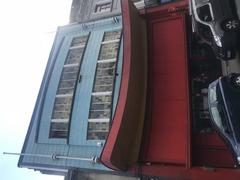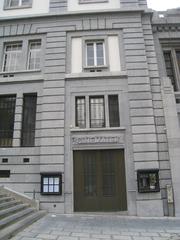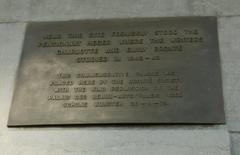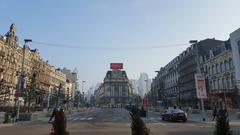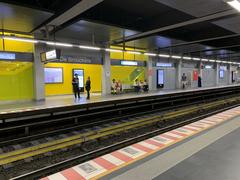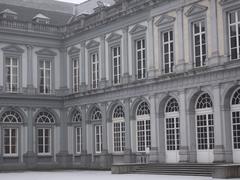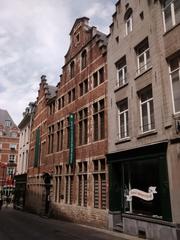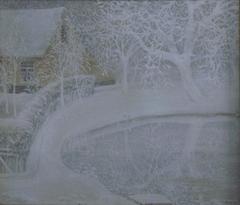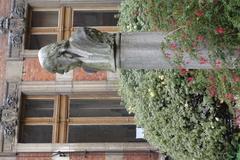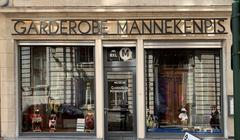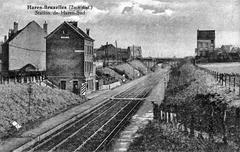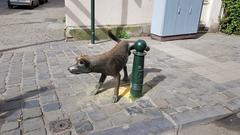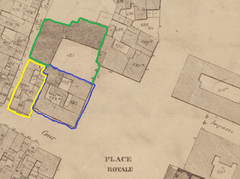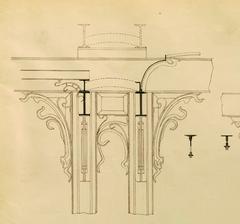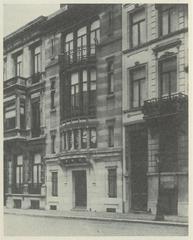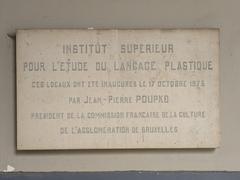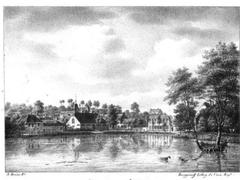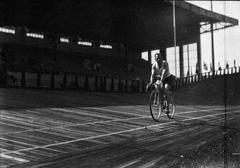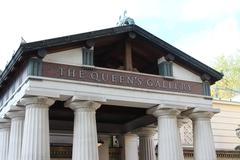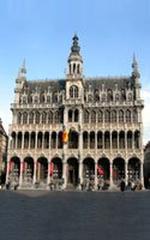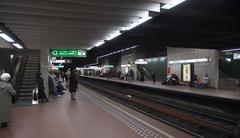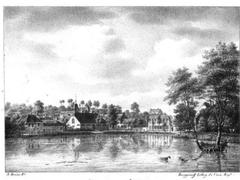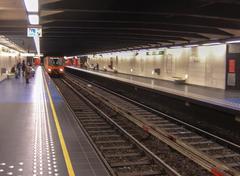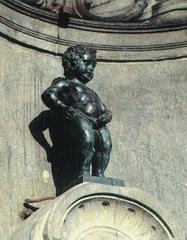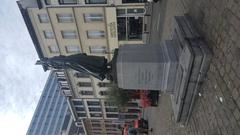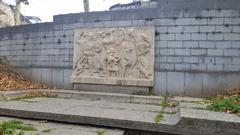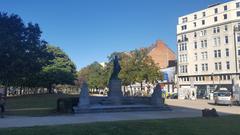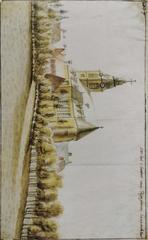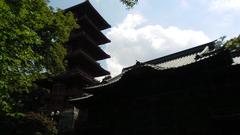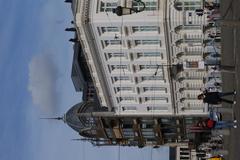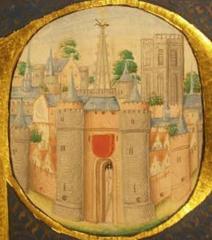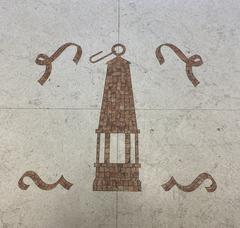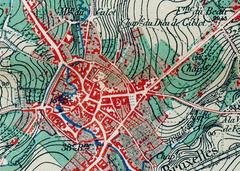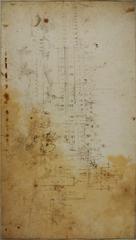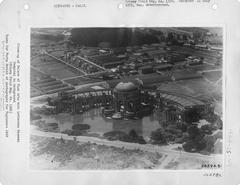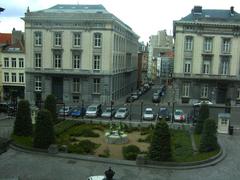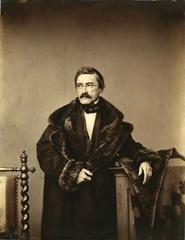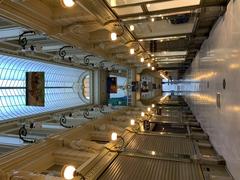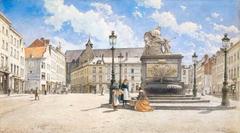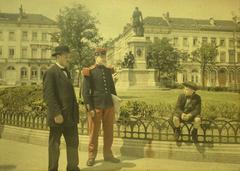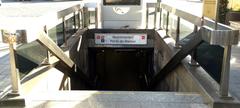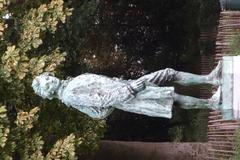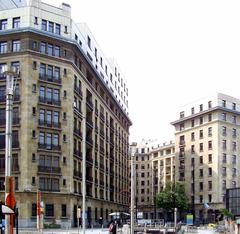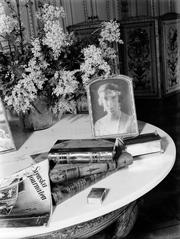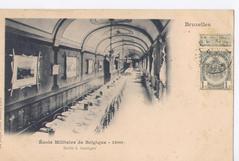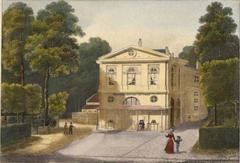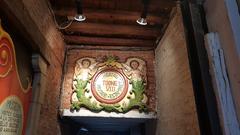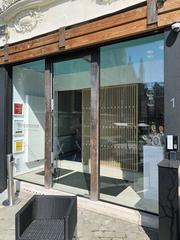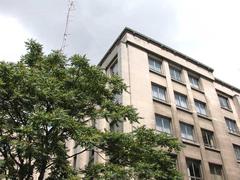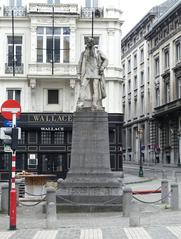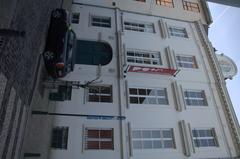
Comprehensive Guide to Visiting Tour Japonaise - Japanese Tower, Brussels, Belgium
Date: 24/07/2024
Introduction
The Japanese Tower, or Tour Japonaise, in Brussels, Belgium, stands as a unique symbol of cross-cultural fascination and architectural brilliance. Commissioned by King Leopold II and designed by French architect Alexandre Marcel, the tower was inspired by the Panorama du Tour du Monde at the Paris Exposition of 1900. Completed in 1905, this nearly 50-meter-tall pagoda is a testament to early 20th-century orientalism—a period marked by European enthusiasm for Asian cultures (Cityzeum). Nestled in the Mutsaard district near the Royal Palace of Laeken, the Japanese Tower forms part of the Museums of the Far East complex, which also includes the Chinese Pavilion and the Museum of Japanese Art. Although currently closed to the public due to structural weaknesses, the Japanese Tower continues to be a significant landmark, reflecting historical cultural exchanges between Japan and Europe. This guide delves deep into the history, architectural beauty, and cultural significance of the Japanese Tower, along with practical information for those wishing to explore its surroundings.
Table of Contents
- Introduction
- Origins and Construction
- Architectural Design
- Historical Context
- Cultural Significance
- Preservation and Recognition
- Visitor Information and Tips
- Exhibitions and Collections
- Impact on Belgian Cultural Landscape
- Future Prospects
- Conclusion
- FAQs
Discover the Japanese Tower in Brussels - History, Significance, and Visitor Information
Origins and Construction
The Japanese Tower, also known as Tour Japonaise in French and Japanse Toren in Dutch, is a prominent structure in the Mutsaard district near the Royal Palace of Laeken in Brussels, Belgium. Inspired by the Panorama du Tour du Monde at the Paris Exposition of 1900, King Leopold II commissioned French architect Alexandre Marcel to design and construct the Japanese Tower. Construction began in 1900, and the tower was inaugurated in 1905. This iconic structure stands as a testament to the early 20th-century fascination with oriental architecture.
Architectural Design
Standing nearly 50 meters (160 feet) tall, the Japanese Tower is a stunning pagoda (Tō) set within a replica Japanese garden. Its design reflects the Japanese architectural styles that captivated European interest during this era of increased cultural exchanges between Japan and the West. The tower’s intricate details and striking presence make it a key highlight in Brussels’ architectural landscape.
Historical Context
The Japanese Tower’s construction was part of a broader European trend in the late 19th and early 20th centuries, characterized by a fascination with Asian cultures known as orientalism. This period saw the creation of numerous exhibitions and museums dedicated to Asian art and culture. The Japanese Tower, along with the Chinese Pavilion and the Museum of Japanese Art, forms part of the Museums of the Far East complex in Brussels.
Cultural Significance
The Japanese Tower houses an impressive collection of Japanese art, primarily porcelain crafted for export to the West. The Museum of Japanese Art, located within the complex’s carriage house, features samurai armor, netsuke, decorative sword hilts, woodblock prints, and other artifacts. These collections offer valuable insights into Japanese art and its reception in the West.
Preservation and Recognition
In 2019, the Japanese Tower and the Chinese Pavilion were designated as protected monuments, highlighting their historical and cultural importance. Although closed to the public since 2013 due to structural weaknesses, efforts have been made to preserve and restore these buildings. As of 2022, the Federal Government decided not to reopen the complex, but the recognition ensures their preservation for future generations.
Visitor Information and Tips
While the Japanese Tower and associated museums are currently closed to the public, visitors can still explore the surrounding area and appreciate the architectural beauty of these structures from the outside. The site is accessible via the Stuyvenbergh metro station on line 6 of the Brussels Metro. For those interested in Asian art, the Art & History Museum at the Parc du Cinquantenaire offers an opportunity to view some of the collections from the Museums of the Far East.
Visitor Information:
- Visiting Hours: Currently closed to the public.
- Ticket Prices: Not applicable due to closure.
- Accessibility: The site is accessible via the Stuyvenbergh metro station on line 6 of the Brussels Metro.
Exhibitions and Collections
The Japanese Tower and its associated museums have hosted various temporary exhibitions showcasing Asian art, including Japanese porcelain and samurai armor. The Museums of the Far East refer to three separate museums: the Chinese Pavilion, the Japanese Tower, and the Museum of Japanese Art. These museums have been instrumental in promoting an understanding of Asian art and culture in Europe.
Impact on Belgian Cultural Landscape
The Japanese Tower and the Museums of the Far East have had a lasting impact on Belgium’s cultural landscape by fostering cultural exchanges between Belgium and Japan. Though currently closed, the collections are partially displayed at the Art & History Museum at the Parc du Cinquantenaire in Brussels, ensuring public access to these valuable artifacts.
Future Prospects
The future of the Japanese Tower and the Museums of the Far East remains uncertain. While restored, the decision not to reopen them has left many questions unanswered. However, their recognition as protected monuments ensures their preservation. The enduring interest in Asian art and culture suggests that these museums will continue to play a significant role in cultural exchanges between Belgium and Japan.
Conclusion
In summary, the Japanese Tower in Brussels is a testament to the historical and cultural exchanges between Japan and the West. Its architectural beauty, cultural significance, and the valuable collections it houses make it an important landmark in Belgium’s cultural heritage. Despite its current closure, the Japanese Tower continues to symbolize the enduring fascination with Asian art and culture in Europe.
FAQs
Q: Can I visit the Japanese Tower in Brussels?
A: As of now, the Japanese Tower is closed to the public due to structural weaknesses. However, you can admire its exterior and visit the Art & History Museum to see some of its collections.
Q: How do I get to the Japanese Tower?
A: The Japanese Tower is accessible via the Stuyvenbergh metro station on line 6 of the Brussels Metro.
Q: Are there guided tours available?
A: Currently, there are no guided tours available due to the closure of the tower.
Q: What other attractions are nearby?
A: The Royal Palace of Laeken and the surrounding parks are nearby attractions worth visiting.
Stay updated by following us on social media and checking our website for any changes in the status of the Japanese Tower.
